Old monasteries and churches await in Southwest Germany
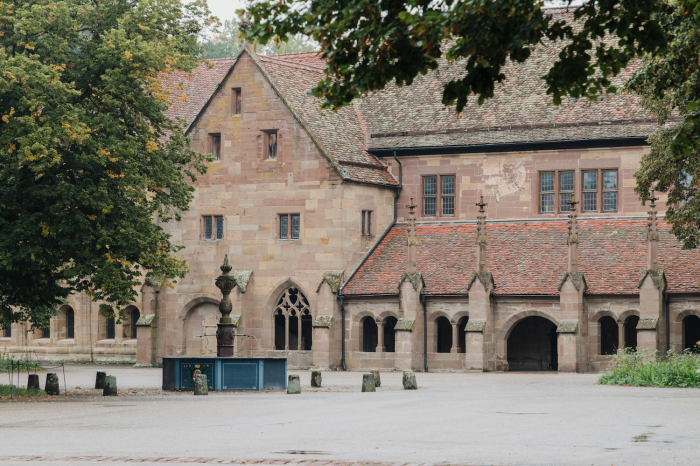
A recent road trip across Baden-Württemberg, a state in Southwest Germany, took me to old monasteries and churches.
Baden-Württemberg, Germany’s third-largest state, was created in the aftermath of World War II from the historically separate territories of Baden and Württemberg. For centuries they existed as duchies or kingdoms first within the fragmented Holy Roman Empire and later in the unified German Empire until the various monarchies were abolished following the kaiser’s loss in World War I.
Reminders of the history are everywhere, including in the religious fabric of Southwest Germany. Unlike other parts of the country, where Lutheranism came to dominate after the Reformation, adherents of the old religion still make up a plurality in Baden-Württemberg.
My road trip started in Stuttgart, the capital of this state and a city many know for Mercedes-Benz and Porsche. After spending the night at an airport hotel, I picked up my ride from Sixt, a Renault Captur crossover, and embarked upon a four-night trip that took me to Maulbronn, Calw and Alpirsbach in the Black Forest followed by Reichenau Island, Constance and Meersburg near Lake Constance in the foothills of the Alps.
I first stopped at the UNESCO World Heritage-listed Maulbronn Monastery in Maulbronn, about 45 minutes by car from Stuttgart.
The remarkably complete and well-preserved medieval monastic complex dates to the first half of the 12th century and includes the former Cistercian abbey church — a Lutheran church since the Reformation — and assorted outbuildings that have been repurposed over the centuries. Unlike other sights I later visited, a self-guided audio tour in English was available. Not only was this essential, but it allowed me to explore at my own pace and not worry about keeping up with a guide. Hands down the best part of the former monastery is the church’s interior with numerous period architectural and decorative details, including misericords on the underside of the extensive quire stalls.
An hour away is Calw, where I would sleep at the Hotel Kloster Hirsau after visiting the ruins of Hirsau Abbey.
Destroyed during the Nine Years’ War at the end of the 17th century, the ruins are a blend of Romanesque and Gothic architecture. Against the backdrop of the Black Forest, the one-time Benedictine abbey resembles a romanticism painting. What appears to be the surviving church was originally a mere chapel. It was heavily modified in a gaudy and inauthentic attempt at Gothic revival in the 19th century for use by the local Lutheran parish. Without much to do besides a walk around the ruins, you might consider skipping Hirsau for more time at the next destination.
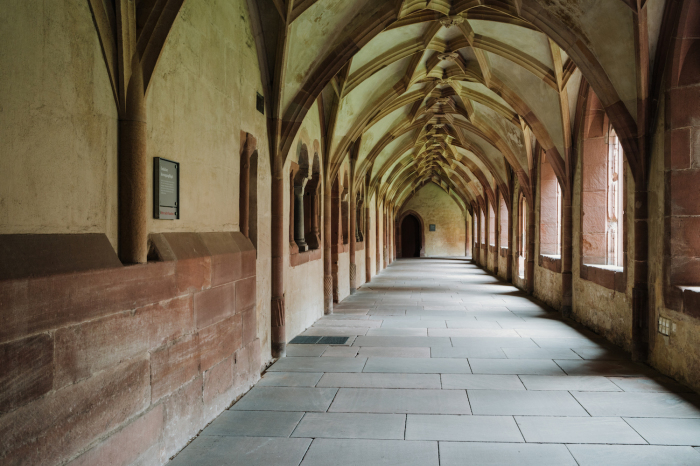
Having woke up early the next day I made my way to Alpirsbach, where a Benedictine monastery existed from its founding in the 11th century until the dissolution in the 16th century by the then-duke of Württemberg, a Protestant.
The cruciform-shaped, cathedralesque edifice — a fine specimen of mostly Romanesque architecture — is, in fact, the third iteration of the abbey church and dates to the 12th century. Much of what you see, particularly on the exterior, is original. This includes the circa 1130 tympanum above the west front’s doors. Inside, a masterpiece wooden altar from the early 1500s is in the north transept.
As with the other pre-Reformation monastic churches, the space is presently used for the rites of the Evangelical Lutheran Church of Württemberg. The entrance for visitors, incorporated in an adjoining building that originally served as the abbot’s residence, leads to a small gift shop, ticket window and comprehensive museum. While much of the exhibits, including a rare painted wood Romanesque lectern, were self-explanatory almost nothing was translated.
For my second night, I stayed at Hotel St. Elizabeth. The upscale three-star hotel sits on the grounds of a modern-day monastery belonging to the Sisters of Mercy of the Holy Cross, a Roman Catholic religious order.
After one of the best breakfasts of my trip, I drove about 5 miles to Reichenau Island, also on the UNESCO World Heritage List, with its three medieval churches.
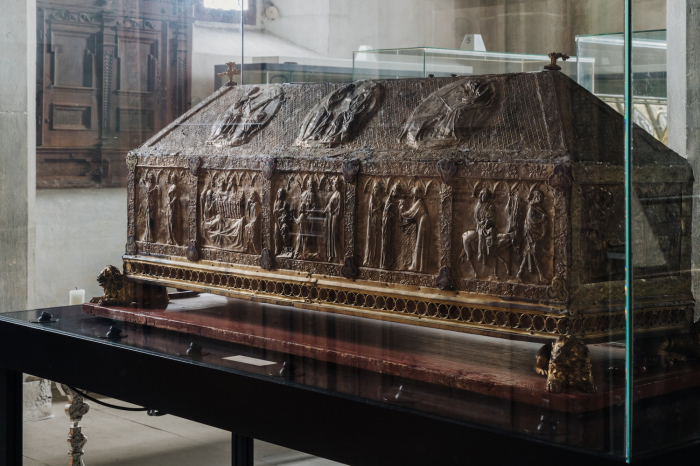
Connected to the mainland by a causeway, the island in Lake Constance has had a Christian presence since at least 724, when a Benedictine monastery was founded by itinerant Bishop and later St. Pirmin. What he founded eventually became the Imperial Abbey of Reichenau and was among the richest and most prominent monasteries in the Holy Roman Empire. I was fortunate to receive an extensive, behind-the-scenes tour from Gunter Andres, a retired English teacher-turned-guide. Without him, I would have been lost. Literally and figuratively. I also wouldn’t have seen the treasury room with its holy relics, including the bones of St. Mark the Evangelist and a pitcher used during the wedding at Cana.
A short drive away through vineyards and farm fields is the Church of St. George.
The Romanesque church looks mostly unchanged since its founding by the archbishop-elector of Mainz, who built the church after receiving the skull of St. George from the pope in 896. Inside, one finds a nave lined with spectacular wall paintings. Dating to 1000, the eight paintings depict biblical miracles performed by Jesus. They are complemented by a depiction of the last judgment from 1708 or 1709 in the west apse.
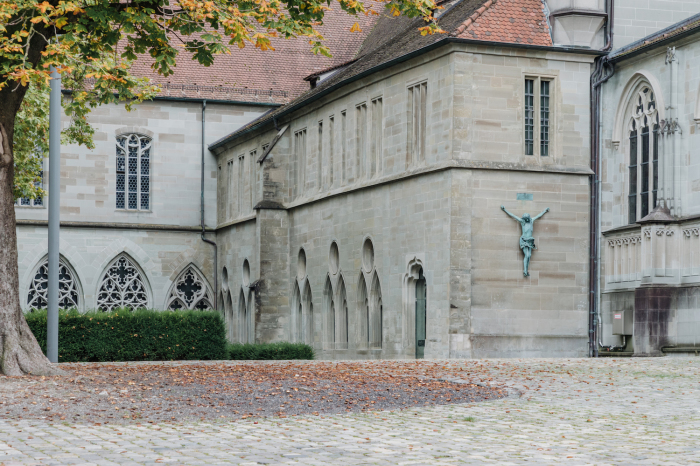
Nearby is Constance, a mid-sized university city on Germany’s border with Switzerland.
The big draw here is Constance Minster, which hosted the Council of Constance during its centuries-long stint as the cathedral and seat of the prince-bishop of Constance. The pre-Reformation council, held from 1414 until 1418, was presided over by the Holy Roman emperor and, among other things, settled the schism that resulted in competing papal claimants, affirmed papal supremacy, and condemned early Reformer Jan Hus to death by burning at the stake. While its appearance has changed — the church’s exterior was given a Gothic makeover — the Romanesque nave from the time of the council remains largely intact.
Running behind schedule and out of daylight, I retrieved my rental car from the underground parking garage at the Fish Market (Fischmarkt) and drove to the car ferry for the shuttle across Lake Constance to Meersburg. Here, I slept at the family-owned Hotel Löwen (more on that later).
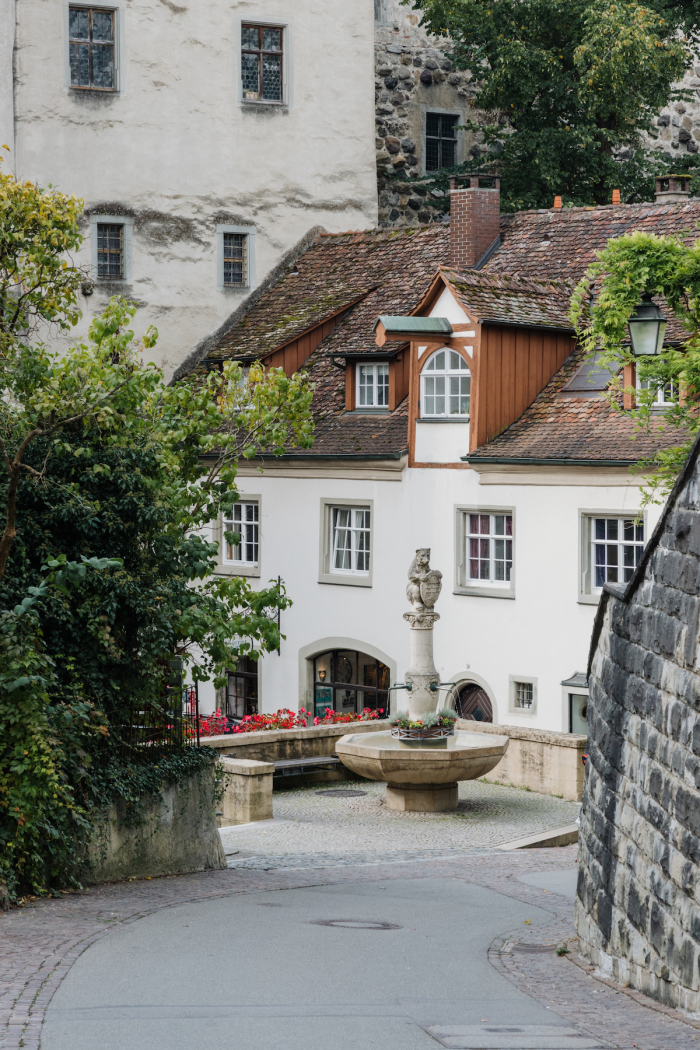
Meersburg, it is claimed, dates to the 7th century when a Merovingian king built a castle here. No trace of that castle exists, though a later medieval castle, called the Old Castle, still stands with a commanding position over the newer lower town and waterfront. The town is largely a result of the Reformation driving the prince-bishop from his see in 1526. Constance’s loss proved to be Meersburg’s gain as the cityscape seen today can be credited to the successive prelates with their dual ecclesiastical and temporal authority. One such landmark is the baroque New Palace, which today houses a fascinating museum. In nicer months, the museum café has outdoor seating with million-dollar panoramic views.
The cobblestoned streets have something to discover around every corner — think vines growing in every vacant parcel on the steep slope separating the upper and lower old towns, centuries-old half-timbered buildings, and endless other photo opportunities for the Instagram set. One of my unexpected discoveries was the Bible Gallery, which occupies a 500-year-old former Dominican convent next to the tourism office on the aptly named Church Street (Kirchstraße). Established in 1988 by the Evangelical or Protestant Church in Baden, the multi-floor museum tells the story of the Bible and how it continues to influence daily life even in a highly secular society. Exhibits include countless artifacts and other objects, all of which are intended to have the soft touch of evangelization. There is also a recently revamped English self-guided audio tour.
My fourth and final night in Southwest Germany was spent at a countryside inn on the grounds of Salem Monastery and Palace, a Cistercian abbey-turned-palace-turned boarding school.
The former Imperial Abbey of Salem was founded in 1136 and, as with Reichenau, thrived as one of the most prominent monasteries in the Holy Roman Empire until its dissolution in 1803 during the age of Napoleon. The baroque and rococo buildings — the original Gothic abbey church miraculously escaped a great fire in 1697 — were expropriated by the former Grand Duchy of Baden, whose rulers kept most of the estate until 2009 when the state government of Baden-Württemberg purchased everything except a small wing occupied by the 88-year-old margrave of Baden.
Today, the one-time monastery is split between a small noble residence and an elite boarding school with visitors admitted during normal hours for sightseeing and tours. Unfortunately, the inn’s location beyond the gate means no after-hours access, not even for an early morning walk.
If you go
Germany is fully open to vaccinated Americans. Visitors should be prepared to show proof — the paper vaccine cards with the CDC logo work — at restaurants, hotels and indoor attractions or sights. Additionally, medical-grade masks are required indoors.
I had no problems driving in Germany, especially on stretches of the autobahn highways without a posted speed limit. Just be sure to get a rental with guaranteed GPS navigation. The built-in navigation on my Renault rental was excellent and easy to use after I changed the system’s language to English. Also, you will want to carry some spare change as parking lots don’t generally accept credit card payments. In fact, carry plenty of cash because an unusually high number of small shops, restaurants and even hotels in Germany don’t accept credit cards.
In hindsight, I would have stayed another night or two at Hotel St. Elizabeth. While overnighting at the heart of Meersburg’s old town was memorable, it was also an inconvenience due to the combination of pedestrian streets and extremely limited to nonexistent parking.
Information, including at most of the old monasteries and churches covered in this column, was seldom translated. English-speaking guides can be booked through the local tourism offices in Constance and Reichenau, though tours may not be available every day. Expect to use Google Translate at hotel restaurants as English menus were also rare.
Despite Delta Air Lines discontinuing its nonstop service from Atlanta to Stuttgart, the airport can still be reached from major U.S. airports with just one connection. Alternatively, the airport in Zurich, Switzerland, is about an hour from Constance.
Follow @dennislennox on Instagram and Twitter.
Dennis Lennox writes about travel, politics and religious affairs. He has been published in the Financial Times, Independent, The Detroit News, Toronto Sun and other publications. Follow @dennislennox on Twitter.




























